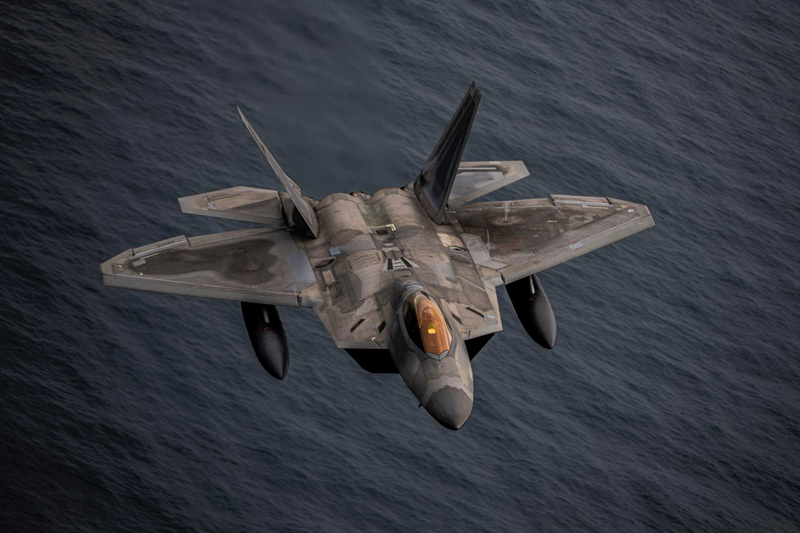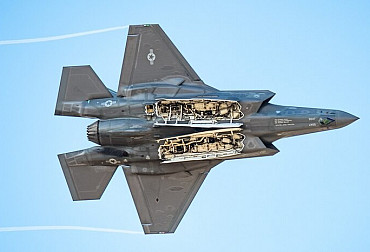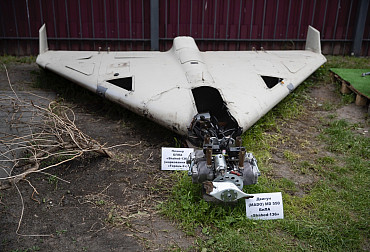Congress rescues F-22 Raptors: A look at the defense policy bill
In a significant move, Congress has once again stepped in to save the aging F-22 Raptors from retirement, a decision that has been met with mixed reactions within the defense community. The compromise defense policy bill, recently released after weeks of negotiations, sets the United States Air Force's (USAF) minimum fighter inventory at 1,112 planes, effectively blocking the Air Force's request to retire older F-22 Raptors. This marks the second consecutive year that Congress has denied the Air Force's plea, sparking a debate over the future of these iconic fighter jets.

The F-22 Raptor is a fifth-generation, twin-engine, stealth air superiority fighter aircraft developed and produced by Lockheed Martin for the United States Air Force (USAF). It is renowned for its exceptional performance capabilities and advanced technology, making it one of the most advanced and capable fighter jets in the world. Here are some key details and information about the F-22 Raptor:
-
Development and Introduction: The F-22 Raptor program began in the late 1980s as a replacement for the aging F-15 Eagle. It entered service with the USAF in December 2005 and has been in operation since then.
-
Stealth Technology: The F-22 is designed with advanced stealth technology, which allows it to operate in highly contested airspace with minimal detection by enemy radar. Its design minimizes radar cross-section, making it extremely difficult for adversaries to track and engage.
-
Speed and Agility: The F-22 is a highly maneuverable aircraft with supersonic capabilities. It can reach speeds of up to Mach 2.25 (approximately 1,500 mph) without using afterburners and can sustain supersonic speeds without using afterburners for extended periods.
-
Superior Air Superiority: The primary mission of the F-22 Raptor is air superiority. It is designed to dominate the skies, engage enemy aircraft, and ensure control of the airspace. Its combination of stealth, speed, agility, and advanced avionics makes it highly effective in air-to-air combat.
-
Sensor Suite: The F-22 is equipped with a sophisticated sensor suite, including radar systems, electronic warfare systems, and infrared sensors. It has a high degree of situational awareness, allowing the pilot to detect and engage multiple targets simultaneously.
-
Weapons: The F-22 is capable of carrying a variety of air-to-air and air-to-ground weapons, including AIM-120 Advanced Medium-Range Air-to-Air Missiles (AMRAAM), AIM-9 Sidewinder missiles, and precision-guided munitions. It can also internally carry its weapons to maintain a stealthy profile.
-
Pilot Protection: The aircraft is equipped with advanced safety features to protect the pilot, including ejection seats, oxygen systems, and environmental control systems.
-
Limited Production: The production of the F-22 Raptor was limited to just 195 aircraft due to its high cost and changing strategic priorities. The USAF decided not to continue production beyond this number, making it a relatively rare and valuable asset.
-
Operational Usage: F-22s have been deployed in various exercises and operations, including combat missions over Syria. They have not seen extensive combat, primarily because of their air superiority focus and the absence of peer-level adversaries in recent conflicts.
-
Future Upgrades: While the F-22 program is no longer in production, there have been discussions about potential upgrades to maintain its relevancy in modern air combat. These upgrades could involve improved avionics, software enhancements, and weapon system improvements.
A Costly Battle-Readiness Dilemma
The decision to save the F-22 Raptors comes in the face of the Air Force's claims that it would be prohibitively expensive to bring these older Block 20 F-22s up to modern combat standards. Service officials have argued that these aircraft lack crucial modern weapons and systems, necessitating an investment of billions of dollars. Instead, they wanted to redirect these funds towards the Next Generation Air Dominance program, a secretive project aimed at developing a new-generation fighter jet.
Congress's Stance on Aircraft Retirement
The proposed F-22 retirements were part of a broader Air Force initiative to shed more than 300 aircraft in fiscal 2024, with the intention of reallocating resources towards higher-end technology. While the compromise defense policy bill approves some of these retirements, including the A-10 Warthogs and F-15C and -D fighters, it firmly rejects the retirement of F-22 Raptors.
Maintaining a Fighter Inventory
In addition to preserving the F-22s, the defense policy bill imposes limits on other Air Force divestment plans, such as the F-15Es, and mandates that the service must maintain a total fighter inventory of at least 1,112 aircraft. This move reflects Congress's commitment to ensuring the nation's air superiority in an increasingly complex global security landscape.
Focus on Collaborative Combat Aircraft (CCA) and Tankers
The defense policy bill also highlights Congress's interest in the Air Force's efforts to develop collaborative combat aircraft (CCAs), often referred to as drone wingmen. Lawmakers are requesting specific information on key milestones and cost estimates for the CCA program. Furthermore, the bill addresses concerns with the KC-46 Pegasus tanker program, which has faced various challenges. It calls for measures to expedite the delivery of KC-46s to Israel, which has been eagerly awaiting these tankers.
A Closer Look at the Tanker Program
While awaiting the tanker fixes, the bill puts a hold on the Air Force's final acquisition strategy for its next purchase of tankers. This decision comes with a demand for an updated tanker roadmap timeline, which should include procurement of the Next Generation Air Refueling System. Additionally, the bill seeks a business case analysis of the Air Force for the KC-135 recapitalization program and validated requirements from the joint staff for the contract competition under the same program.
Preserving the HH-60W Combat Rescue Helicopter
Congress has also taken steps to maintain the Lockheed Martin production line for the HH-60W combat rescue helicopter, a program that the Air Force had planned to truncate. Despite concerns about its utility in the Chinese area of responsibility, lawmakers see value in continuing production, emphasizing the importance of flexibility in military capabilities.
Conclusion
As Congress moves to finalize the defense policy bill, the fate of the F-22 Raptors hangs in the balance. While their preservation reflects the recognition of their strategic importance, it also raises questions about resource allocation in a rapidly evolving defense landscape. Ultimately, this decision highlights the intricate dance between budget constraints, military preparedness, and the pursuit of future technology and capabilities within the realm of national defense. The upcoming vote on the defense policy bill will play a pivotal role in shaping the future of these iconic fighter jets and other critical defense programs.






